
Majestic Heights: The Himalayas in India
Explore the Himalayas in India: A harmonious blend of towering peaks, rich cultural heritage, thrilling adventures, and serene spiritual retreats.
The Himalayas in India stretch across five states, offering a breathtaking panorama of snow-capped peaks, lush valleys, and serene rivers. This magnificent mountain range is home to some of the world's highest peaks, including Kanchenjunga, the third highest mountain in the world. The Himalayas are not just about high altitudes; they are a gateway to a variety of cultures, religions, and landscapes that are unique to this region. Adventure enthusiasts flock to the Himalayas for trekking, mountaineering, and river rafting. Famous trekking routes like the Valley of Flowers, Roopkund, and the Great Lakes of Kashmir provide unforgettable experiences. For those seeking spiritual solace, the Himalayas are dotted with ancient monasteries, temples, and pilgrimage sites such as Rishikesh, Badrinath, and Hemkund Sahib. The serene environment and the peaceful aura make these locations perfect for meditation and yoga retreats. Wildlife lovers will find the Himalayas to be a paradise with its rich biodiversity. National parks like the Nanda Devi Biosphere Reserve and the Great Himalayan National Park are home to rare species such as the snow leopard, Himalayan black bear, and various colorful bird species. The local Himalayan cuisine, influenced by Tibetan and Indian flavors, is another delight that awaits visitors. Traditional dishes like momos, thukpa, and yak cheese are must-tries. The Himalayas in India offer a mix of adventure, spirituality, and natural beauty that is unparalleled.
Local tips in Himalayas
- Acclimate to the altitude to avoid altitude sickness. Spend a day or two at a lower altitude before ascending further.
- Carry adequate warm clothing, even in summer, as temperatures can drop significantly, especially at night.
- Respect local customs and traditions, especially in spiritual and religious sites. Dress modestly and behave respectfully.
- Hire local guides for trekking and mountaineering. Their expertise and knowledge of the terrain can enhance your experience and ensure safety.
- Ensure you have the necessary permits for trekking and visiting certain areas. These can often be obtained through local tourism offices.
Majestic Heights: The Himalayas in India
The Himalayas in India stretch across five states, offering a breathtaking panorama of snow-capped peaks, lush valleys, and serene rivers. This magnificent mountain range is home to some of the world's highest peaks, including Kanchenjunga, the third highest mountain in the world. The Himalayas are not just about high altitudes; they are a gateway to a variety of cultures, religions, and landscapes that are unique to this region. Adventure enthusiasts flock to the Himalayas for trekking, mountaineering, and river rafting. Famous trekking routes like the Valley of Flowers, Roopkund, and the Great Lakes of Kashmir provide unforgettable experiences. For those seeking spiritual solace, the Himalayas are dotted with ancient monasteries, temples, and pilgrimage sites such as Rishikesh, Badrinath, and Hemkund Sahib. The serene environment and the peaceful aura make these locations perfect for meditation and yoga retreats. Wildlife lovers will find the Himalayas to be a paradise with its rich biodiversity. National parks like the Nanda Devi Biosphere Reserve and the Great Himalayan National Park are home to rare species such as the snow leopard, Himalayan black bear, and various colorful bird species. The local Himalayan cuisine, influenced by Tibetan and Indian flavors, is another delight that awaits visitors. Traditional dishes like momos, thukpa, and yak cheese are must-tries. The Himalayas in India offer a mix of adventure, spirituality, and natural beauty that is unparalleled.
When is the best time to go to Himalayas?
Iconic landmarks you can’t miss
Taj Mahal
Discover the Taj Mahal, a UNESCO World Heritage Site and a stunning masterpiece of Mughal architecture, symbolizing love and beauty in Agra, India.
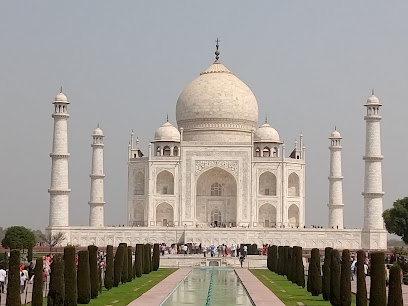
Himalaya Darshan
Discover unparalleled beauty at Himalaya Darshan, a premier viewpoint in Uttarakhand offering breathtaking views of the majestic Himalayas.

International Mountain Museum
Discover the International Mountain Museum in Pokhara, Nepal — a captivating tribute to the Himalayas and their rich cultural heritage.

Tabo Monastery
Discover the ancient beauty and spiritual heritage of Tabo Monastery, a serene retreat nestled in the stunning Spiti Valley of Himachal Pradesh.

Great Himalayan National Park
Explore the breathtaking beauty of Great Himalayan National Park, a UNESCO World Heritage site, where nature and adventure await amidst stunning landscapes.

Kausani Tea Estate
Experience the tranquility of Kausani Tea Estate, a stunning garden destination in Uttarakhand, offering breathtaking Himalayan views and exquisite teas.

Dare The Himalayas
Explore the majestic Himalayas with Dare the Himalayas, your ultimate adventure hub in Himachal Pradesh for hiking and outdoor sports.

Go Himalayas
Experience thrilling adventures and spiritual journeys with Go Himalayas, the premier travel operator in Rishikesh, Uttarakhand.

Being Himalayan
Experience the best of Shimla with Being Himalayan, your trusted travel operator for unforgettable Himalayan adventures.

Tabo caves
Explore the ancient Tabo Caves in Himachal Pradesh, where stunning murals and rich Buddhist heritage await amidst breathtaking Himalayan scenery.

La Himalaya
Explore the breathtaking beauty of the Himalayas with La Himalaya, your premier travel operator in Shimla, Himachal Pradesh.
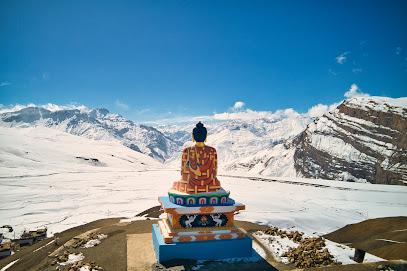
Climb The Himalayas
Experience the thrill of adventure sports in the stunning landscapes of Manali at Climb The Himalayas, where nature meets excitement.
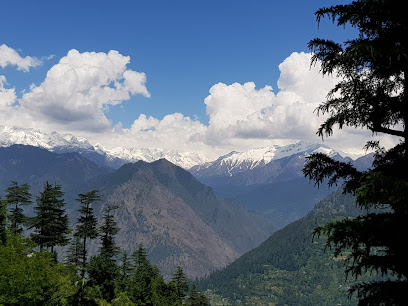
Himalaya Darshan View Point
Discover unparalleled beauty at Himalaya Darshan View Point, a breathtaking vantage point in Uttarakhand offering stunning Himalayan vistas.

Experience The Himalayas
Discover the breathtaking beauty and spiritual essence of the Himalayas with Experience The Himalayas, your ultimate adventure guide.

Namastey Himalaya
Explore the majestic Himalayas with Namastey Himalaya, a top outdoor activity organizer in Joshimath offering thrilling adventures and breathtaking landscapes.

Unmissable attractions to see
Patan Darbar Square
Explore Patan Darbar Square: A UNESCO World Heritage site showcasing ancient architecture and vibrant local culture in Lalitpur, Nepal.

Devi's Fall Pokhara.
Experience the enchanting beauty of Devi's Fall in Pokhara, a breathtaking waterfall surrounded by lush landscapes and serene ambiance.

Chitwan National Park
Discover the breathtaking wildlife and vibrant culture of Chitwan National Park, a UNESCO World Heritage Site in Nepal.

World Peace Pagoda
Discover tranquility and breathtaking views at the World Peace Pagoda, a symbol of harmony nestled in the heart of Pokhara, Nepal.
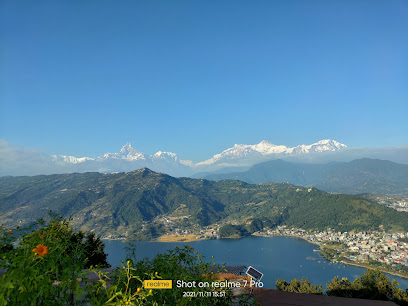
Himalaya Darshan
Discover the awe-inspiring views of the Himalayas at Himalaya Darshan, a must-visit attraction in Uttarakhand, ideal for nature lovers and adventure seekers.

International Mountain Museum
Explore the International Mountain Museum in Pokhara, a captivating tribute to mountains, mountaineering, and Himalayan culture in Nepal.

Masroor Rock Cut Temple
Explore the ancient artistry of Masroor Rock Cut Temple, a stunning Hindu temple complex in Himachal Pradesh, India, renowned for its intricate carvings and breathtaking scenery.

Tal Barahi Temple, Pokhara
Explore the enchanting Tal Barahi Temple, an iconic Hindu shrine on Phewa Lake, offering stunning views and a glimpse into Nepalese spirituality.

Himalayan Mountaineering Institute
Experience adventure and history at the Himalayan Mountaineering Institute, a premier destination for mountaineering enthusiasts in Darjeeling.

Seti River Gorge
Discover the stunning beauty of Seti River Gorge in Pokhara, a natural wonder offering adventure and breathtaking views of Nepal's landscapes.

Gupteshwor Mahadev Cave
Explore the spiritual and natural wonders of Gupteshwor Mahadev Cave in Pokhara, a breathtaking destination filled with mystical beauty and captivating rock formations.

Tabo Monastery
Experience the spiritual serenity and artistic brilliance of Tabo Monastery, a UNESCO World Heritage Site in the heart of Himachal Pradesh.

Great Himalayan National Park
Discover the unrivaled beauty of Great Himalayan National Park, a UNESCO World Heritage Site, where adventure and nature blend seamlessly in Himachal Pradesh.

Kausani Tea Estate
Experience the lush beauty of Kausani Tea Estate, a serene retreat in Uttarakhand with stunning views and rich tea culture.

Kalika Bhagwati Temple, Nepal
Discover the spiritual charm of Kalika Bhagwati Temple in Baglung, a serene Hindu temple showcasing stunning architecture and deep cultural significance.

Essential places to dine
Himalayan Pizza - Bir
Discover the flavors of the Himalayas at Himalayan Pizza - Bir: where delicious pizzas meet stunning mountain views.
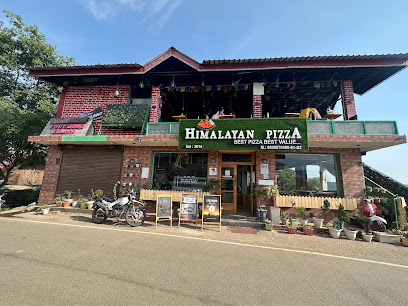
THE HIMALAYAN ROOFTOP by namlang
Experience authentic Himalayan cuisine at The Himalayan Rooftop in Majnu-ka-tilla - where every dish is a journey through culture and flavor.

Himalayan Roots
Discover authentic Himalayan flavors at Himalayan Roots in Haldwani – where tradition meets modern dining in a cozy atmosphere.

Yeti - The Himalayan Kitchen, Connaught Place
Discover authentic Nepalese and Tibetan cuisine at Yeti - The Himalayan Kitchen in Connaught Place, New Delhi – a true taste of the Himalayas.
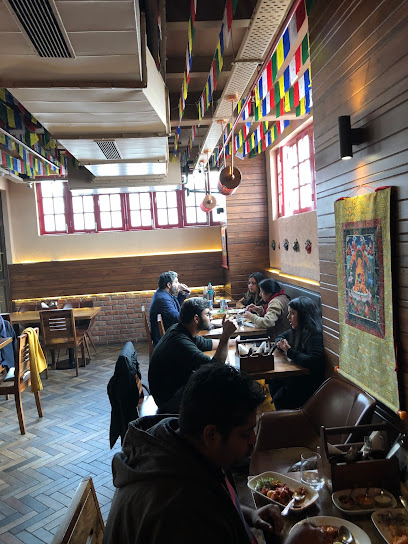
Hotel Himalayas Inn Veg $ non veg Dinning and Lodge
Experience delightful dining at Hotel Himalayas Inn in Tandur with a diverse menu offering both vegetarian and non-vegetarian dishes.
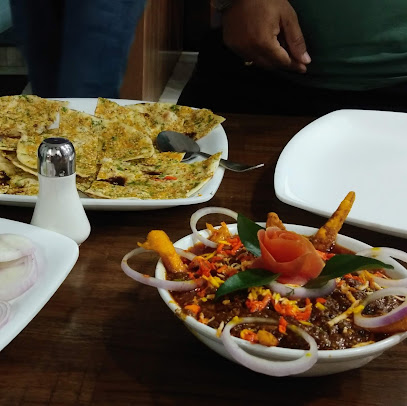
Lord Krishna Himalayan Hotel & Restaurant
Discover peace and gourmet dining at Lord Krishna Himalayan Hotel & Restaurant in Mukteshwar—your perfect escape in the Himalayas.

Lama Kitchen - Himalayan Cook House
Discover authentic Himalayan flavors at Lama Kitchen in Hauz Khas Village – your gateway to Nepalese culinary traditions.
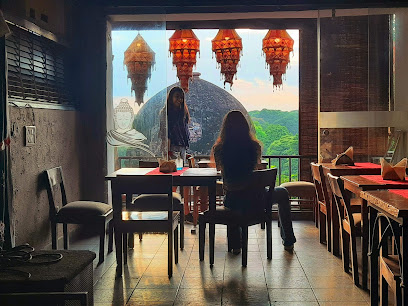
The Himalayan Cafe
Experience authentic flavors at The Himalayan Cafe in Kaza – where local cuisine meets breathtaking mountain views.

Himalayan Hobbit House
Experience culinary bliss amidst breathtaking Himalayan views at the Himalayan Hobbit House in Uttarakhand.

Hotel Relish
Experience delectable fast food and breathtaking Himalayan views at Hotel Relish – your perfect dining destination in Uttarakhand.

Pailaaag Orchard & Restaurant (Himalayan view Hotel ) )
Experience tranquility at Pailaaag Orchard & Restaurant with stunning Himalayan views, delicious food, and cozy accommodations in Mukteshwar.

Himalaya Valley Restaurant, Kausani
Discover culinary delights amidst stunning Himalayan vistas at Himalaya Valley Restaurant in Kausani.

Himalayan Restaurant
Experience authentic Himalayan cuisine amidst breathtaking views in Gangtok's charming culinary haven.

Cafe Meraki Himalayas
Discover tranquility at Café Meraki Himalayas - where breathtaking views meet delicious cuisine in Mukteshwar.

Worlds highest restaurant
Experience unparalleled dining at the world's highest restaurant in Himachal Pradesh, where breathtaking views meet exquisite local cuisine.
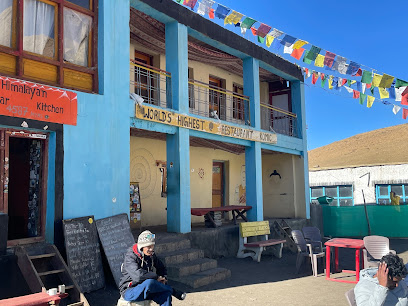
Markets, malls and hidden boutiques
Mall Road Market Manali
Experience the charm of Mall Road Market in Manali, a vibrant shopping and cultural hub surrounded by breathtaking Himalayan views.

Bhat-Bhateni Supermarket
Discover the vibrant offerings of Bhat-Bhateni Supermarket, where local culture meets convenient shopping in Lalitpur, Nepal.

Tabo Monastery
Explore the ancient beauty and spirituality of Tabo Monastery in Himachal Pradesh, a must-visit destination for culture and nature enthusiasts.

Kalapatthar Trekking Store
Explore the best of Nepal's trekking adventures with quality gear from Kalapatthar Trekking Store in Thamel, Kathmandu.

Himalayan Java - Tridevi Thamel
Discover the delightful ambiance and exquisite coffee at Himalayan Java, a must-visit café in the heart of Kathmandu's Thamel district.

Himalayan Singing Bowl
Explore the enchanting world of handcrafted singing bowls and immerse yourself in the serene traditions of Nepal at the Himalayan Singing Bowl in Pokhara.

Pilgrims Book House
Explore Pilgrims Book House in Kathmandu – a unique bookstore blending literature, antiques, and local culture for an unforgettable experience.

The Khukuri House (KHHI nepal)
Explore the artistry of traditional Nepali knives at The Khukuri House in Lalitpur, a true gem for craftsmanship enthusiasts.

Himalayan Java - Mangal Bazaar
Discover the essence of Nepalese coffee culture at Himalayan Java - Mangal Bazaar, where rich flavors and local charm await every visitor.

Tabo caves
Explore the ancient Tabo Caves in Himachal Pradesh, a UNESCO World Heritage site, rich in Buddhist history and stunning murals.

Himalayan Organic Coffee
Discover Himalayan Organic Coffee in Naubise, where every sip connects you to the rich flavors of Nepal's organic coffee culture amidst stunning mountain views.

Local Women's Handicrafts
Explore authentic craftsmanship and empower local women at Local Women's Handicrafts in Kathmandu, where every purchase supports fair-trade practices.
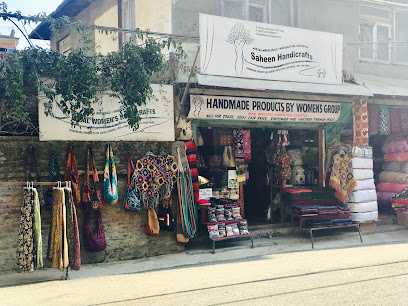
Nepal Hemp House
Explore the vibrant and sustainable world of Nepal Hemp House, your go-to destination for unique hats, bags, and handicrafts in Kathmandu.
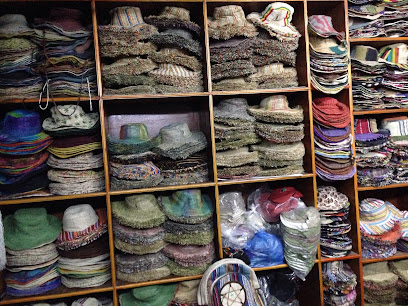
Ex Gurkha Khukuri House - EGKH
Explore authentic Nepali craftsmanship at Ex Gurkha Khukuri House, home to exquisite khukuris and rich cultural heritage in Kathmandu's Thamel.

Sagarmatha Tea House (सगरमाथा चिया पसल)
Discover the essence of Nepal at Sagarmatha Tea House, where authentic brews and local flavors create a memorable tea experience in Kathmandu.

Essential bars & hidden hideouts
Wildflower Hall, An Oberoi Resort, Shimla
Discover the luxurious Wildflower Hall in Shimla, where breathtaking nature meets exceptional hospitality for an unforgettable experience.
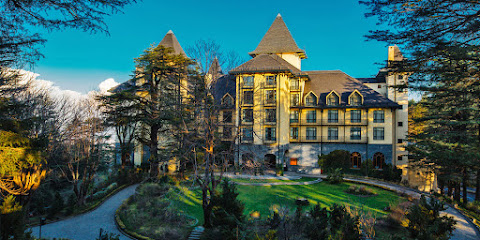
Cafe 1947
Experience the taste of Italy amidst the serene beauty of Manali at Cafe 1947, a perfect blend of delightful cuisine and vibrant atmosphere.

Cafe Simla Times : Cafe, Biergarten & Bar on the Mall Road Shimla ( Awarded Most Instagrammable Cafe of Himachal)
Experience the scenic beauty and delightful flavors at Cafe Simla Times, the most Instagrammable cafe in Shimla.

D'Polo Club & Spa Resort, Dharamshala
Experience luxury and tranquility at D'Polo Club & Spa Resort in Dharamshala, your ideal retreat surrounded by stunning Himalayan beauty.
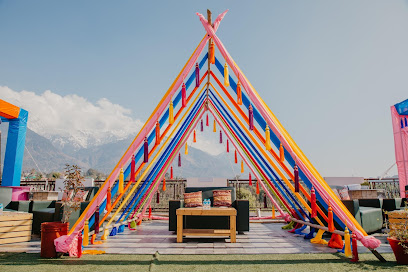
Cafe Live & Loud
Discover the vibrant atmosphere of Cafe Live & Loud, Gangtok's premier live music bar, offering great food, coffee, and unforgettable performances.
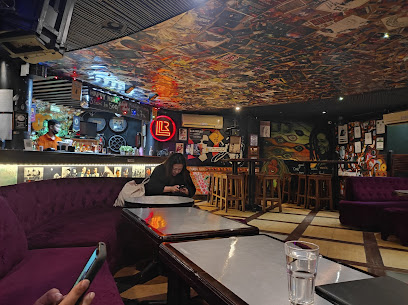
RIDE INN CAFE, BAR & Resort
Experience the perfect blend of relaxation and excitement at RIDE INN CAFE, BAR & Resort in Manali, where stunning views meet delectable cuisine.

Scandal Delights Cafe Bar Dine In
Discover the vibrant flavors of Scandal Delights Cafe Bar Dine In, a culinary gem in Shimla, offering delightful dishes and an inviting atmosphere.

Cafe on the Rocks
Discover the delightful flavors and stunning views at Cafe on the Rocks, a perfect retreat in Uttarakhand for food lovers and nature enthusiasts alike.

Labooze Cafe Bar Lounge Mcleodganj
Experience the unique blend of vibrant flavors and a cozy atmosphere at Labooze Cafe Bar Lounge in the heart of McLeodganj.

Lord Krishna Himalayan Hotel & Restaurant
Discover tranquility and culinary delights at the serene Lord Krishna Himalayan Hotel & Restaurant in Mukteshwar, Uttarakhand.

The Himalayan
Experience luxury and adventure at The Himalayan, a stunning resort in Manali offering breathtaking views and top-notch amenities.

Hotel Himalayan Escape & Restaurant - Luxurious Stays in the Lap of Nature
Experience the ultimate luxury amidst nature's beauty at Hotel Himalayan Escape & Restaurant in Himachal Pradesh.

Rudra Himalayan Retreat
Experience the perfect blend of Himalayan serenity and culinary delight at Rudra Himalayan Retreat in Almora, Uttarakhand.

The Birdcage
Discover a culinary haven at The Birdcage in Mukteshwar, where exquisite flavors meet serene mountain views for a memorable dining experience.

Himalayan Hobbit House
Discover the enchanting Himalayan Hobbit House in Binsar, where whimsical charm meets delectable cuisine in a breathtaking mountain setting.

Local Phrases about Himalayas
-
- Helloनमस्ते
[namaste] - Goodbyeअलविदा
[alvida] - Yesहाँ
[haan] - Noनहीं
[nahin] - Please/You're welcomeकृपया
[krupaya] - Thank youधन्यवाद
[dhanyavaad] - Excuse me/Sorryक्षमा करें
[kshama karein] - How are you?आप कैसे हैं?
[aap kaise hain?] - Fine. And you?ठीक हूँ। और आप?
[theek hoon. aur aap?] - Do you speak English?क्या आप अंग्रेज़ी बोलते हैं?
[kya aap angrezi bolte hain?] - I don't understandमुझे समझ में नहीं आया
[mujhe samajh mein nahin aaya]
- Helloनमस्ते
-
- I'd like to see the menu, pleaseकृपया मेन्यू देखना चाहूँ
[krupaya menu dekhna chahoon] - I don't eat meatमैं मांस नहीं खाता/खाती
[main maans nahin khaata/khaati] - Cheers!चियर्स!
[cheers!] - I would like to pay, pleaseकृपया मैं भुगतान करना चाहूँ
[krupaya main bhugtan karna chahoon]
- I'd like to see the menu, pleaseकृपया मेन्यू देखना चाहूँ
-
- Help!बचाओ!
[bachao!] - Go away!चले जाओ!
[chale jao!] - Call the Police!पुलिस को बुलाओ!
[police ko bulaao!] - Call a doctor!डॉक्टर को बुलाओ!
[doctor ko bulaao!] - I'm lostमैं खो गया/गई हूँ
[main kho gaya/gayi hoon] - I'm illमुझे बीमारी है
[mujhe bimari hai]
- Help!बचाओ!
-
- I'd like to buy...मैं खरीदना चाहूँ...
[main khareedna chahoon...] - I'm just lookingमैं सिर्फ देखना चाहता/चाहती हूँ
[main sirf dekhna chahta/chahti hoon] - How much is it?यह कितने का है?
[yah kitne ka hai?] - That's too expensiveयह बहुत महंगा है
[yah bahut mahnga hai] - Can you lower the price?क्या आप कीमत कम कर सकते हैं?
[kya aap keemat kam kar sakte hain?]
- I'd like to buy...मैं खरीदना चाहूँ...
-
- What time is it?अब कितने बजे हैं?
[ab kitne baje hain?] - It's one o'clockएक बजे हैं
[ek baje hain] - Half past (10)दस बजे बारह मिनट
[das baje barah minute] - Morningसुबह
[subah] - Afternoonदोपहर
[dopahar] - Eveningशाम
[shaam] - Yesterdayकल
[kal] - Todayआज
[aaj] - Tomorrowकल
[kal] - 1एक
[ek] - 2दो
[do] - 3तीन
[teen] - 4चार
[chaar] - 5पांच
[paanch] - 6छह
[chhah] - 7सात
[saat] - 8आठ
[aath] - 9नौ
[nau] - 10दस
[das]
- What time is it?अब कितने बजे हैं?
-
- Where's a/the...?यहाँ...कहाँ है?
[yahaan...kahaan hai?] - What's the address?पता क्या है?
[pata kya hai?] - Can you show me (on the map)?क्या आप मुझे दिखा सकते हैं (नक्शे पर)?
[kya aap mujhe dikha sakte hain (naksha par)?] - When's the next (bus)?अगली (बस) कब है?
[agli (bus) kab hai?] - A ticket (to ....)एक टिकट (के लिए ....)
[ek ticket (ke liye ....)]
- Where's a/the...?यहाँ...कहाँ है?
History of Himalayas
-
The Himalayas have been a crucial part of ancient trade routes, including the famous Silk Road. These routes facilitated the movement of goods, culture, and ideas between India, Tibet, and Central Asia. Traders would traverse the treacherous mountain passes to exchange silk, spices, and other valuable commodities.
-
During the 19th century, the Himalayas became a focal point in 'The Great Game' between the British Empire and Tsarist Russia. This geopolitical struggle for influence in Central Asia saw explorers, spies, and diplomats navigating the rugged terrain of the Himalayas, leading to detailed mapping and increased knowledge of the region.
-
The British colonial period saw numerous expeditions into the Himalayas for both scientific and strategic purposes. Notable expeditions include the 1865 survey that led to the identification of Mount Everest, known locally as Sagarmatha or Chomolungma. These expeditions contributed significantly to the cartographic and geological understanding of the region.
-
Post-1947, the Himalayas became a contentious border region between India and its neighbors, particularly China and Pakistan. The Sino-Indian War of 1962 and subsequent skirmishes have been pivotal in shaping the geopolitical landscape of the region. The Line of Actual Control (LAC) between India and China remains a sensitive and frequently disputed boundary.
-
The Himalayas are rich in cultural diversity, influenced by Hinduism, Buddhism, and indigenous traditions. Important cultural sites include the Hemis Monastery in Ladakh, the Tawang Monastery in Arunachal Pradesh, and the Char Dham pilgrimage circuit in Uttarakhand. These sites attract pilgrims and tourists alike, offering a glimpse into the spiritual heritage of the region.
-
In the 1970s, the Chipko Movement emerged in the Indian Himalayas as a grassroots environmental campaign aimed at preventing deforestation. Villagers, particularly women, would hug trees to protect them from being cut down. This movement gained international attention and highlighted the importance of sustainable environmental practices in the region.
-
The post-independence era saw a surge in mountaineering activities in the Indian Himalayas. The Indian Mountaineering Foundation was established in 1957 to promote and regulate mountaineering. Peaks such as Nanda Devi, Kanchenjunga, and Shivling have become iconic challenges for climbers from around the world, contributing to the region's reputation as a mountaineering paradise.
Himalayas Essentials
-
The Himalayas in India can be accessed via several entry points depending on which region you wish to explore. The nearest international airports include Indira Gandhi International Airport in Delhi, Tribhuvan International Airport in Kathmandu (Nepal), and Bagdogra Airport in West Bengal. From these airports, you can take domestic flights, trains, or buses to reach various Himalayan towns such as Leh, Shimla, Manali, and Darjeeling. For those traveling to the eastern Himalayas, Guwahati Airport in Assam is another viable option.
-
Transportation within the Himalayan region varies by area. In popular tourist destinations like Shimla and Manali, local buses, taxis, and jeeps are readily available. For more remote areas, hiring a private vehicle or a local guide is often necessary. The Indian Railways network connects many towns at the foothills, such as Kalka and Pathankot, from where you can take narrow-gauge trains or road transport to hill stations. For trekking and remote areas, walking and mule transport are sometimes the only options.
-
The official currency in India is the Indian Rupee (INR). Major credit and debit cards are accepted in most hotels, restaurants, and shops in larger towns. However, in remote areas and smaller villages, cash is essential. ATMs can be found in larger towns like Leh, Shimla, and Darjeeling, but it's advisable to carry sufficient cash when venturing into rural areas. Currency exchange services are available at airports and major tourist hubs.
-
The Himalayan region in India is generally safe for tourists, but it’s important to remain vigilant. Petty crimes such as pickpocketing can occur in crowded markets and bus stations. Areas like Paharganj in Delhi, which is a common transit point, are known for scams targeting tourists. When trekking, always go with a guide and inform someone of your itinerary. Avoid isolated areas after dark and be cautious of wildlife. Carry a first-aid kit and be aware of altitude sickness.
-
In case of emergencies, dial 112 for immediate assistance. Major towns have police stations and medical facilities. For serious medical issues, you may need to be evacuated to larger cities. It is highly recommended to have comprehensive travel insurance that covers medical emergencies and evacuation. Local pharmacies are available for minor health issues, but carry any specific medications you might need. Trekking agencies often provide emergency contact numbers and safety briefings.
-
Fashion: Do dress in layers and bring warm clothing, as temperatures can drop significantly. Avoid wearing revealing clothes, especially in conservative areas. Religion: Do respect local customs. Remove your shoes and cover your head when entering temples and monasteries. Public Transport: Do be polite and give up your seat for elderly passengers. Avoid loud conversations and maintain cleanliness. Greetings: Do greet people with a 'Namaste' or a handshake. Eating & Drinking: Do try local cuisine and accept food offerings graciously. Avoid eating with your left hand, as it is considered impolite.
-
To experience the Himalayas like a local, visit traditional markets and try local foods like momos, thukpa, and chhang. Engage with locals to learn about their customs and stories. Attend local festivals such as Losar in Ladakh or Himachal Pradesh's Kullu Dussehra for a unique cultural experience. If you’re interested in spirituality, consider visiting lesser-known monasteries and ashrams. For trekking, hire local guides who can show you hidden trails and provide valuable insights.













